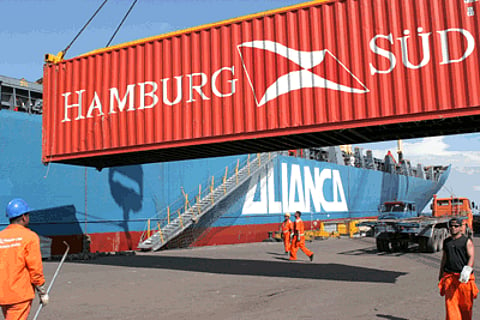

Drewry Maritime Research's latest Container Forecaster report published in late December, 2012, highlights that despite attempts by carriers to pull capacity from east-west trade routes, significantly weaker cargo volumes have limited the success of their attempts to lift freight rates for any sustainable periods.
Since the "huge overnight success" of the March 2012 GRIs implemented by shipping lines to bring rate levels back above break-even, there have been a further seven attempts to lift rates – equating to a total of around USD2,800-USD3,000 per TEU on the Asia to North Europe trade. During this period, average headhaul freight rates have actually declined from about USD2,700 in early March to USD2,400 as of early January 2013.
"While this is not a disaster for the carriers, it proves that there is a fundamental weakness in the market compounded by low volumes on the back of a non-existent peak season last year," commented Drewry.
"Coupled with a marked reluctance by carriers to pull enough capacity, particularly in the Asia-Mediterranean trade, average headhaul load factors have remained in the 75-85 per cent range for most of the second half of 2012 and the strategy of missing sailings has proven to be insufficient to lift freight rates for any sustainable period."
With another 40 ships of at least 10,000 TEU due for delivery this year, carriers will have a "very difficult time deploying them without doing further damage to the supply/demand balance". Operational alliances across virtually all global trade lanes, meanwhile, will "certainly increase".
Neil Dekker, Drewry's head of container research, emphasised: "The emphasis on this tactic (missed sailings) will only lead to severe volatility in the spot market with carriers reacting to weaknesses on a temporary basis, with the GRIs essentially being used to prohibit further rate erosion, rather than advancing them by any sustainable margin."
The latest indications from the market suggest that load factors from Asia to North Europe and the Mediterranean are higher – helped by the usual pre-Chinese New Year cargo spike, but the "acid test will be how long any carrier rate successes last beyond the middle of February when volumes traditionally weaken."
More optimistically, Drewry is forecasting global demand to increase by 4.6% this year with "several caveats attached": "Considerably faster capacity growth at the trade route level will severely challenge carriers and even the ability of the fast growing north-south trades (such as Asia to Latin America) to prop up the deficiencies elsewhere is now being questioned. It cannot be ignored that the headhaul compound annual growth rate of the three core east-west trade lanes in the 2008-12 period has been only 0.4%.
"Mainly due to the successes of the second and third quarters in 2012, lines are forecasted to make around USD1.5 billion collective profit, although not all carriers will end up in the black. If carriers continue to engage in sensible cost cutting strategies and carefully manage capacity at trade route level, which will probably involve a more radical strategy on lay ups – and projections on global GDP growth ring true, they could make a profit approaching USD5.0 billion in 2013. Contract rates negotiated with shippers on the key east-west trade lanes will also be higher when compared to the low levels of 2012.
"But overall, the destiny of 2013 remains firmly in the carriers' hands once again as they need to quickly react to the new reality of weaker demand growth in an era of growing capacity. It is extremely doubtful that carriers will be able to continue to repeat the GRI successes of last March if they are relying solely on an industry collective resolve."
Dekker confirmed: "Carriers' obvious reluctance to pull capacity in the core trades since October suggests that many still have an eye on trade share. Carriers seem to want to have it both ways. The core trade lanes are undergoing a major upgrading process with over 40 x 10,000 TEU vessels delivered in 2012, but at the same time they are refusing to lay up or idle significant tonnage."
Drewry's analysis of the six east-west services suspended from October 2012 revealed that only eight vessels were temporarily idled, with the majority simply transferred to other strings.
